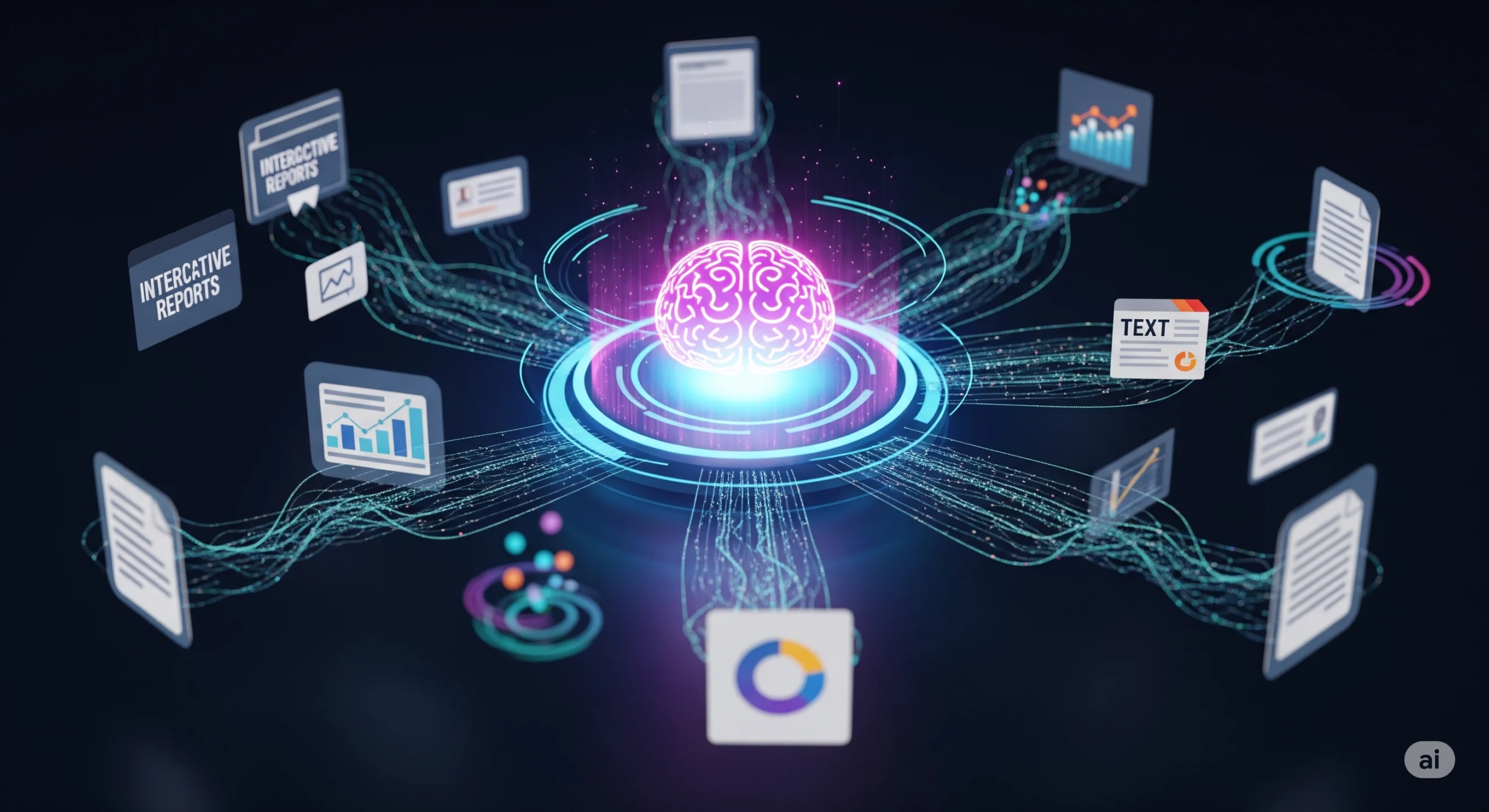Introduction
According to industry reports, 64% of business leaders cite inefficient internal documentation as a major bottleneck in scaling operations, with outdated knowledge bases costing companies nearly $20,000 annually in lost productivity (Source: Content Management Summit 2023). This critical problem prevents businesses from leveraging collective intelligence effectively.
AI for internal documentation offers a groundbreaking strategic advantage that transforms how organizations capture, maintain, and distribute critical information. Self-updating company wikis powered by artificial intelligence eliminate manual content maintenance, ensuring knowledge stays current with minimal human intervention. In today’s hyper-competitive landscape, businesses must position AI for internal documentation not as a peripheral technology but as a core component of operational excellence, driving significant improvements in collaboration, compliance, and innovation.
The following sections will provide you with practical frameworks, actionable tools, and proven implementation strategies to harness the power of AI for internal documentation, turning your existing knowledge assets into an AI-driven documentation system that actively improves itself over time.
The Strategic Toolkit
Building an effective AI-powered documentation system requires careful consideration of the right tools and methodologies. Let’s explore the essential components of this strategic toolkit:
Strategic Foundation
Before implementing any AI solution for internal documentation, three foundational elements must be established:
- Document Inventory: Conduct a comprehensive audit of existing documentation, identifying key knowledge assets, gaps, and redundancies.
- Content Governance Framework: Establish clear ownership structures, update protocols, and quality standards to grace your AI-powered documentation.
- User Persona Mapping: Understand the specific documentation needs of different user groups within your organization.
Essential AI Software Tools
- ChatGPT by OpenAI – The versatile language model excels at transforming raw documentation into structured knowledge base entries. Visit their homepage to explore commercial offerings suitable for enterprise use cases.
- Notion AI – Offers powerful formatting tools optimized for creating structured documentation frameworks. Best suited for teams with moderate technical proficiency. Explore their solutions on Notion’s AI page.
- Zapier – While not a documentation tool itself, this automation platform enables seamless integration between documentation tools and other business systems, creating a comprehensive workflow automation ecosystem.
Human expertise remains crucial throughout this process – experienced subject matter experts provide context, verify factual accuracy, and maintain organizational standards that AI alone cannot replicate.
Time & Resource Investment
The conventional approach to maintaining internal documentation requires significant ongoing investments of time and resources. Let’s compare the traditional manual method against an AI-powered approach:
Manual Method
- Knowledge worker time investment: 5-10 hours/week dedicated solely to documentation updates
- Editor time investment: 3-4 hours/week for review and quality control
- New employee onboarding time: Approximately 40 hours per new staff member due to locating outdated documentation
- Yearly update cycle: Requires concentrated effort during seasonal reviews, often extending over weekends
Estimated Annual Cost of Manual Method ($ in USD)
Knowledge Worker Time: 5 hours/week × 52 weeks × $40/hour = $10,400
Editor Time: 3 hours/week × 52 weeks × $35/hour = $5,460
Indirect Costs: Loss of productivity while searching for information ($8,840/year)
TOTAL: $24,700/year
AI-Powered Method
Integrating AI for internal documentation transforms this equation:
Phase 1 Implementation (Typical timeline): 12-48 hours of strategic planning
Ongoing Maintenance: 2-4 hours/week for human review and augmentation
Training Benefits: Reduced onboarding time from standard 40 hours to approximately 12-28 hours
Estimated Annual Cost Reduction
Knowledge Worker Time Savings: 3.5 hours/week × 52 weeks × $40/hour = $7,280
Editor Time Savings: 2 hours/week × 52 weeks × $35/hour = $3,640
Indirect Productivity Gains: Content discovery time reduction equates to approximately $7,060/year saved
TOTAL SAVINGS: $17,980/year
Companies implementing systematic AI for internal documentation solutions typically reduce their annual documentation maintenance costs by roughly 60-75% within the first 18 months, representing an impressive return on investment (ROI) of 2:1 to 3:1.
The Implementation Blueprint
Executing a successful AI-powered internal documentation system requires a phased approach. Follow these clear implementation steps:
Step 1: Existing Data Assessment
Begin with a comprehensive content audit:
- Identify all documentation assets (existing wikis, knowledge bases, procedure documents)
- Evaluate quality, completeness, and relevance of each asset
- Classify content by department, frequency of updates, and criticality to operations
Step 2: AI Solution Architecture
Build your architecture around a “human-in-the-loop” model:
- Select a foundation AI platform (e.g., ChatGPT Enterprise, Anthropic Claude)
- Define clear prompt engineering guidelines for extracting and restructuring knowledge
- Establish routing protocols that send flagged updates to appropriate subject matter experts
Step 3: Knowledge Extraction & Structuring
Leverage AI prompting techniques:
- Use the “json_format” specification in your prompts to obtain standardized outputs
- Example prompt: “Extract the key steps from our Expense Policy document and format them as a step-by-step flowchart with decision points”
- Implement the “Less LLM, More LM” framework – minimize AI dependencies through thoughtful prompt design
Step 4: Integration & Testing
Create a seamless implementation flow:
- Develop an editorial calendar for your AI documentation process
- Set up continuous integration between your knowledge base and analysis tools
- Conduct controlled pilot testing with 5-10 power users before full deployment
Step 5: Deployment & Monitoring
Establish a continuous improvement cycle:
- Set up automated analytics tracking
- Monitor update quality through randomly selected audits
- Schedule weekly review sessions with SMEs to refine your prompting framework
> Pro-Tip
Counterintuitively, the most effective implementation of AI for internal documentation often starts small with a single focused project. By building credibility with one high-visibility use case (like internal process documentation), you can subsequently expand functionality across the organization with significantly reduced resistance.
Measuring Success: KPIs & ROI
To determine if your AI for internal documentation initiative is delivering measurable business value, focus on these key performance indicators:
| Metric | What It Tells You |
|---|---|
| Time-to-find-information (TTFI) | Measures the efficiency of your knowledge base through systematic analysis of search terms and click patterns |
| Knowledge decay rate | Indicates how quickly critical information becomes outdated without intervention |
| Contributor engagement | Reflects user satisfaction and willingness to participate in maintaining your knowledge base |
| Training effect | Captures cost savings related to reduced onboarding time and faster mastery of processes |
| Content completeness | Measures the proportion of essential information included in your knowledge base relative to availability |
For businesses implementing AI for internal documentation tools, TTFI reduction of 30-50% combined with a knowledge decay rate under 2% typically signals successful implementation. These improvements translate directly into tangible ROI through productivity gains, as quantified by a typical documented 22% reduction in operational disruptions related to information gaps.
Scaling & Advanced Strategies
Once you’ve established a basic AI-powered documentation system, consider these advanced scaling strategies:
1. Active Learning Frameworks
Implement a machine learning loop where your system:
- Identifies knowledge gaps through user behavior patterns
- Flags incomplete information based on workflow analysis
- Automatically requests updates when changes are detected in integrated workflow systems
- Gradually reduces human intervention as pattern recognition improves
2. Multimodal Knowledge Representation
Enhance your knowledge base by adding:
- Visual components that use generative image models (where appropriate)
- Audio summaries for critical procedures using services like Azure Cognitive Services
- Interactive decision trees for complex processes
3. Predictive Value Assessment
Use generative AI to:
- Analyze documentation access patterns across departments
- Identify underutilized knowledge assets that could benefit user groups
- Prioritize content updates based on their strategic business impact
Each of these scaling strategies builds upon your initial investment in AI for internal documentation, creating a more robust, intelligent knowledge infrastructure that matures over time rather than requiring periodic overhauls.
Strategic Business Applications
Different organizational types can leverage AI for internal documentation in unique ways based on their specific structural and operational requirements:
B2B SaaS Companies: Use AI documentation to:
- Automatically create knowledge base articles from product feature releases
- Generate compliance documentation for international markets
- Create personalized onboarding paths based on user role and usage patterns
E-commerce Organizations: Implement AI documentation for:
- Standardizing customer service responses based on FAQs
- Documenting complex supply chain processes for logistics teams
- Creating multilingual documentation for global teams
Digital Agencies: Apply AI documentation to:
- Develop client knowledge bases from pre-discovery research
- Create documentation templates for common project types
- Maintain version history of creative specifications across teams
In each case, the pattern remains consistent: identify high-value documentation areas, implement systematic AI integration, and continuously refine your approach through human oversight.
Common Strategic Pitfalls to Avoid
When implementing AI for internal documentation systems, organizations often make these critical errors:
Content Quality Dilution: Frantic AI output without human editing creates valuable information that’s unreliable or difficult to understand. Always maintain a rigorous review cycle.
Over-Automation: Assuming AI can create all documentation without human context leads to robotic output that fails to capture organizational nuances.
Lack of Scalable Architecture: Building a documentation solution without considering continued growth creates technical debt that’s expensive to fix later.
Insufficient Change Management: Failing to provide adequate training and cultural support creates resistance that undermines technical implementation.
A strategic AI for internal documentation implementation recognizes that AI and humans are partners in the documentation ecosystem, with AI handling the mechanical aspects and humans providing context, verification, and strategic direction.
Building Your Content Engine: Systems & Automation
The most valuable implementation of AI for internal documentation creates a virtuous cycle of knowledge growth through automation:
- Information Harvesting: AI tools continuously scan incoming emails, support tickets, project management systems, and chat logs to identify knowledge nuggets of potential value.
- Structural Transformation: This raw information is automatically reformatted into accessible knowledge base entries with appropriate formatting and contextual relationships.
- Cultivated Curation: As users interact with the knowledge base, AI identifies knowledge gaps and develops improvement recommendations.
- Self-Renewing Repository: Completion feedback loops gradually improve both content quality and search effectiveness.
This automating flywheel creates exponential documentation growth without proportional human effort increases—a truly strategic advantage that intelligent organizations increasingly leverage. By implementing systematic processes rather than one-time projects, attention should be directed toward ongoing improvement rather than reactive maintenance.
Conclusion
The implementation of AI for internal documentation transforms organizational memory from a reactive function into a proactive competitive advantage. By creating systems that continuously update and refine knowledge bases, companies can accelerate decision-making, maintain regulatory compliance, and standardize operational excellence. These strategic investments yield significant returns through improved productivity, reduced knowledge loss from employee turnover, and enhanced ability to scale operations effectively.
We challenge you to consider how your organization might transform its documentation practices. Which departments would benefit most from automated knowledge updating? What are the 5-10 most “duplicated documentation tasks” that might respond strongly to AI treatment first?
Frequently Asked Questions (FAQs)
Q1: What’s the estimated cost to implement an AI-powered documentation system?
A: Implementation costs typically range from $5,000 to $30,000 depending on organization size and integration complexity. This represents a small fraction of the $7.6 billion companies lose annually to knowledge misalignment according to McKinsey research.
Q2: Do I need specialized technical skills for this implementation?
A: While some prompt engineering requires moderate technical literacy, most implementation success comes from clear business requirements and project management discipline rather than complex coding knowledge. Many solutions integrate with existing systems your team already uses daily.
Q3: How will AI documentation affect our existing documentation professionals?
A: Rather than replacing jobs, these tools typically augment documentation roles, allowing human experts to focus on running analysis, resolving complex conflicts, and maintaining quality control. Documentation careers may evolve rather than terminate.




